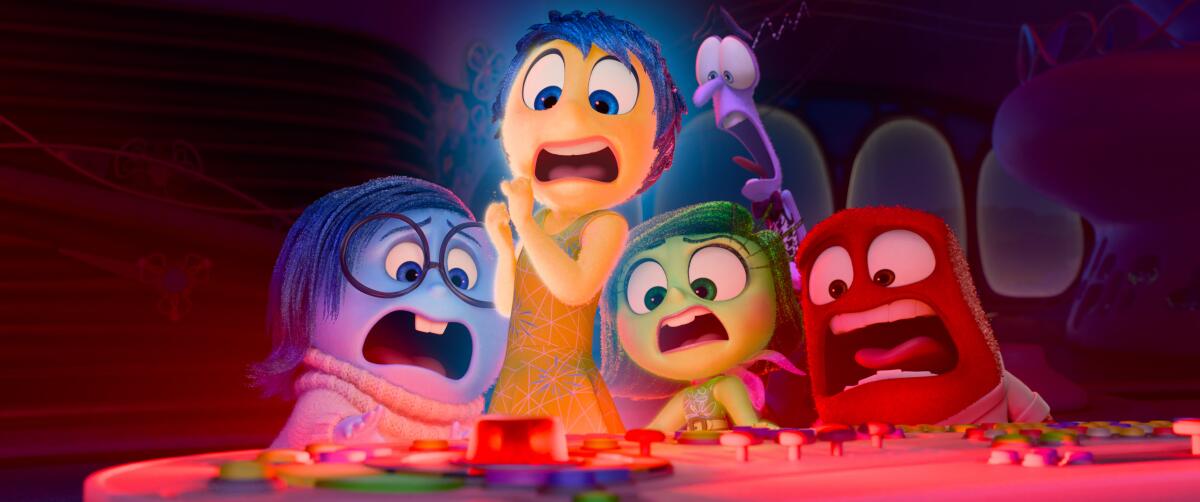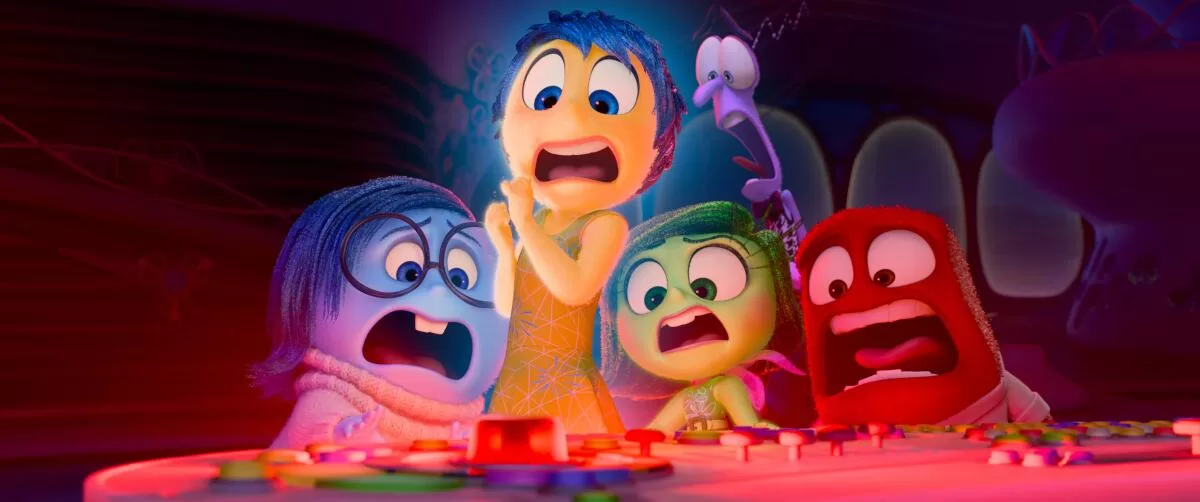The emotions became characters, primarily Joy (voiced by Amy Poehler) and Sadness (Phyllis Smith), who accidentally disrupt the transmission of core memories in the factory-like system of Riley’s brain. They then need to journey through their host’s subconsciousness to stabilize the system.
For the sequel, “Inside Out 2,” Riley’s emotions, which include Anger (Lewis Black), Fear (now voiced by Tony Hale) and Disgust (Liza Lapira, replacing Mindy Kaling), have found a comfortable stasis, co-existing in a harmony that has resulted in a strong sense of self.
Joy has been carefully tending this belief system, chucking Riley’s bad memories like marbles to the back of her mind, creating a happy-go-lucky kid who is totally ill-equipped for what’s coming: puberty, along with a group of new, more complex emotions. You’ll need no introduction to them, but they are Envy (Ayo Edebiri), Ennui (Adèle Exarchopoulos), Embarrassment (Paul Walter Hauser) and the new emotion in charge, Anxiety (Maya Hawke).
They burst into 13-year-old Riley’s brain — a teen who’s here voiced by Kensington Tallman — on the eve of high school and the morning of a three-day hockey skills camp she’s attending with her friends Bree (Sumayyah Nuriddin-Green) and Grace (Grace Lu). With Anxiety at the wheel, determined to build a new Riley in order to keep her safe, the plot of “Inside Out 2” (directed by Kelsey Mann and scripted by Mann, Meg LeFauve and Dave Holstein) is essentially: Riley has a panic attack at hockey camp. But of course there’s so much more going on internally, which is the real story of the film. Once again, Joy has to go on a journey through Riley’s brain, this time to save her sense of self; once again, Joy has to learn that Riley has to experience and navigate every emotion, including these new thornier ones, in order to be a whole person.

(Pixar)
And once again, there’s a nagging sense that’s something’s missing. Where’s Logic? Reason? Rationality? As each emotion takes a turn at the console controlling what’s going on in Riley’s head, it’s clear that she’s not in charge at all, which doesn’t entirely make sense for a newly minted teenager, pubescent or not. The bored, French cool girl Ennui takes charge when it comes to the more intellectual issues, such as hitting the sarcasm button to overcorrect an embarrassing moment about a favorite band (as she does so, it opens a “sar-chasm” in Riley’s Stream of Consciousness, a literal chasm, part of the film’s signature wordplay).
One has to put these questions aside in order to fully enjoy “Inside Out 2,” though it is rather entertaining, diverting enough, especially with the new characters, who steal the show. Hawke and Edebiri deliver the movie’s best vocal performances as the tightly wound Anxiety and Envy, dueling demonic twins, and the smoky voiced Exarchopoulos is inspired casting. There’s also a fun sequence with a few new characters who are found in the vault in Riley’s head: an ultra-serious video game hero, Lance (Yong Yea), on whom she has an early crush; and Bloofy (Ron Funches), a cartoon dog from a show aimed at preschoolers, both who are legitimately funny and offer the animators a chance to play with design and style. These characters are also vastly underused.
The new emotions are creative and fun, especially Hawke’s frizzy-haired Anxiety (Embarrassment and Ennui seem to be nods to the 1980s language-learning cartoon “Muzzy”), while the human/“real world” design is par for the Pixar course: hard, shiny and photorealistic in certain moments. It makes you wonder whether this would be better served with real actors in a live-action format.
As Riley grows up in “Inside Out 2,” the control-room metaphor is stretched to its limits, unfairly rendering her a quivering mess ruled entirely by whims. The film’s representation of how emotions and memories create a belief system and sense of self are indeed useful for talking to kids about how their inner lives and brains work, and the imagery is smart, but it has the feeling of an educational children’s book. The movie‘s internal logic tests our own belief systems and fails to impart anything profoundly insightful to an adult audience.
Walsh is a Tribune News Service film critic.
‘Inside Out 2’
Rating: PG, for some thematic elements
Running time: 1 hour, 36 minutes
Playing: In wide release Friday, June 14
